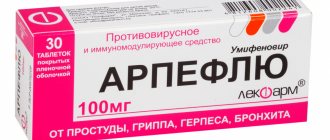Instructions for use KLION tablets
- 1. Basic therapy:
- 500 mg/day (1 tablet in the morning and evening) for 10 days (for women, simultaneous use of vaginal tablets Klion-D 100 is necessary, 1 tablet at night (the tablets are inserted deep into the vagina, pre-moistened with water). To prevent reinfection it is necessary to treat the sexual partner with the same dose of Klion. If necessary, treatment can be repeated. Between courses it is recommended to observe a 3-4 week break with repeated laboratory tests.
- single dose of 2 g (8 tablets) in the evening, before bedtime. The patient and sexual partner are treated simultaneously.
2. Pulse therapy:
For gardnerellosis
the drug is prescribed 500 mg 2 times a day (2 tablets 2 times a day) daily for 7 days, or a single dose of 2 g (8 tablets). If necessary, this dose can be repeated after a one-day break.
When treating giardiasis,
adults and children over 12 years of age
are prescribed 250 mg 3 times a day (1 tablet 3 times a day) for 5 days.
Children aged 8 years
- 500 mg/day in 2 doses (1 tablet 2 times/day),
aged 5 to 8 years
- 375 mg/day (1.5 tablets/day),
aged 2 to 4 years
- 250 mg/day (1 tablet/day),
for children under 1 year of age,
a dose of 125 mg/day (1/2 tablet/day) is prescribed. The duration of treatment is 5 days. The drug is taken after meals.
For amebiasis and acute amoebic dysentery,
adults
are prescribed a dose of 500-750 mg/day,
children under 12 years of age
- 50 mg/kg/day. Frequency of administration: 3 times/day. The duration of treatment is 5-10 days.
For amoebic liver abscess,
adults
are prescribed a dose of 500-750 mg/day, frequency of use - 3 times/day, duration of treatment - 5-10 days;
children aged 7 to 10 years
should be prescribed 1/2 the dose for adults,
from 3 to 7 years old
- 1/3 dose for adults,
from 1 to 3 years old
- 1/4 dose for adults,
children aged up to 1 year
- less than 1/4 of the dose for adults, which should be reduced according to age.
For ulcerative stomatitis
in adults
- 500 mg/day in 2 divided doses (1 tablet 2 times/day) for 3-5 days. In severe cases, Klion can be used on the ulcer as a compress for 20 minutes.
For children
The drug is not indicated for the treatment of ulcerative stomatitis.
To prevent postoperative complications,
adults
are prescribed 500 mg every 8 hours 24 hours before surgery, or prescribed at an initial dose of 1 g 1 time.
After surgery - 500 mg 3 times a day for 7 days. For children under 12 years of age,
the drug is prescribed at a dose of 3.5-7.5 mg/kg according to the same regimen.
When treating infections caused by anaerobic microorganisms,
for
adults and children over 12 years of age,
the dose of Klion is set individually, depending on the patient’s age, location and severity of the disease. The average dose (for a body weight of about 70 kg) is 500 mg 3 times a day. If necessary, the initial dose can be increased to 15 mg/kg (about 1 g per 70 kg of body weight). In especially severe cases, the dose can be increased, but the total dose should not exceed 4 g/day.
For children under 12 years of age
the average dose is 7.5 mg/kg.
Renal dysfunction
does not have a significant effect on the pharmacokinetic parameters of the drug; no change in dosage regimen is required.
However, during hemodialysis, additional use of the drug (orally or intravenously as an infusion) may be required due to a decrease in T1/2 of metronidazole. In patients not on hemodialysis, with CC less than 10 ml/min,
metronidazole metabolites may accumulate. In this case, hemodialysis is recommended; peritoneal dialysis is ineffective.
Metronidazole and its metabolites are well excreted by hemodialysis
. Because during hemodialysis, T1/2 of metronidazole decreases significantly (up to approximately 3 hours); in some cases, additional use of the drug (orally or intravenously as an infusion) may be required.
For severe liver diseases
the metabolism of metronidazole slows down, so the active substance and its metabolites can accumulate in the blood plasma. In these cases, adjustment of the dosage regimen is required depending on the severity of liver damage.
In elderly patients
The pharmacokinetics of metronidazole may change, so treatment is recommended to be carried out under the control of metronidazole levels in the blood plasma.
Klion
Orally and parenterally.
Orally, during or after meals (or with milk), without chewing.
For trichomoniasis - 250 mg 2 times a day for 10 days or 400 mg 2 times a day for 5-8 days. Women must additionally be prescribed vaginal suppositories or vaginal tablets with metronidazole. If necessary, you can repeat the course of treatment with Klion or increase the dose to 0.75-1 g/day. Between courses you should take a break of 3-4 weeks with repeated control laboratory tests. An alternative treatment regimen is to prescribe 2 g once to the patient and his sexual partner.
Children 2-5 years old - 250 mg/day; 5-10 years - 250-375 mg/day, over 10 years - 500 mg/day. The daily dose should be divided into 2 doses. The course of treatment is 10 days.
For giardiasis - 500 mg 2 times a day for 5-7 days.
Children under 1 year old - 125 mg/day, 2-4 years old - 250 mg/day, 5-8 years old - 375 mg/day, over 8 years old - 500 mg/day (in 2 doses). The course of treatment is 5 days.
For giardiasis - 15 mg/kg/day in 3 divided doses for 5 days.
Adults: for asymptomatic amebiasis (if a cyst is detected), the daily dose is 1-1.5 g (500 mg 2-3 times a day) for 5-7 days.
For chronic amebiasis, the daily dose is 1.5 g in 3 divided doses for 5-10 days, for acute amoebic dysentery - 2.25 g in 3 divided doses until the symptoms stop.
For liver abscess, the maximum daily dose is 2.5 g in 1 or 2-3 doses, for 3-5 days, in combination with antibiotics (tetracyclines) and other methods of therapy.
Children 1-3 years old - 1/4 adult dose, 3-7 years old - 1/3 adult dose, 7-10 years old - 1/2 adult dose.
For balantidiasis - 750 mg 3 times a day for 5-6 days.
For ulcerative stomatitis, adults are prescribed 500 mg 2 times a day for 3-5 days; In this case, the drug is not indicated for children.
For pseudomembranous colitis - 500 mg 3-4 times a day.
For eradication of Helicobacter pylori - 500 mg 3 times a day for 7 days (as part of combination therapy, for example in combination with amoxicillin 2.25 g/day).
When treating anaerobic infection, the maximum daily dose is 1.5-2 g.
In the treatment of chronic alcoholism, 500 mg/day is prescribed for a period of up to 6 (not more than) months.
To prevent infectious complications - 750-1500 mg/day in 3 doses 3-4 days before surgery or 1 g once on the first day after surgery. 1-2 days after surgery (when oral administration is already allowed) - 750 mg/day for 7 days.
In case of severe renal dysfunction (creatinine clearance less than 10 ml/min), the daily dose should be reduced by 2 times.
Suspension for oral administration. Anaerobic bacterial infections: children - 7 mg/kg every 8 hours, course of treatment - 7-10 days; Giardiasis: children 2-5 years old - 200 mg/day, 5-10 years old - 300 mg/day, 10-15 years old - 400 mg/day. The duration of treatment for giardiasis is 5 days. The course of treatment can be repeated after 10-15 days
Parenterally. For adults and children over 12 years of age, an initial dose of 0.5-1 g IV drip (infusion duration is 30-40 minutes), and then every 8 hours, 500 mg at a rate of 5 ml/min. If well tolerated, after the first 2-3 infusions they switch to jet administration. The course of treatment is 7 days. If necessary, intravenous administration is continued for a longer time. The maximum daily dose is 4 g. According to indications, switch to maintenance oral administration at a dose of 400 mg 3 times a day. Children under 12 years of age are prescribed according to the same regimen in a single dose of 7.5 mg/kg.
For purulent-septic diseases, 1 course of treatment is usually carried out.
For preventive purposes, adults and children over 12 years of age are prescribed 0.5-1 g intravenously on the eve of surgery, on the day of surgery and the next day - 1.5 g / day (500 mg every 8 hours). After 1-2 days, they switch to maintenance therapy orally. For patients with chronic renal failure and creatinine clearance less than 30 ml/min and/or liver failure, the maximum daily dose is no more than 1 g, the frequency of administration is 2 times a day.
As a radiosensitizing drug, it is administered intravenously at a rate of 160 mg/kg or 4-6 g/sq.m of body surface 0.5-1 hour before the start of irradiation. Apply before each irradiation session for 1-2 weeks. During the remaining period of radiation treatment, therapy with Klion is not carried out. The maximum single dose should not exceed 10 g, course dose - 60 g. To relieve intoxication caused by radiation, drip administration of a 5% dextrose solution, Hemodez or 0.9% NaCl solution is used.
For cervical and uterine cancer, skin cancer, they are used in the form of local applications (3 g dissolved in a 10% DMSO solution), moisten tampons, which are used topically, 1.5-2 hours before irradiation). In case of poor tumor regression, applications are carried out throughout the entire course of radiation therapy. If there is a positive dynamics of tumor clearance from necrosis - during the first 2 weeks of treatment.
Klion-d 100 10 pcs. vaginal tablets
pharmachologic effect
Combined antimicrobial agent (antimicrobial and antiprotozoal agent + antifungal agent).
Composition and release form Klion-d 100 10 pcs. vaginal tablets
Tablets - 1 tablet:
- Active ingredients: metronidazole - 100 mg and miconazole nitrate - 100 mg;
- Excipients: sodium lauryl sulfate - 0.50 mg, colloidal silicon dioxide - 7.00 mg, magnesium stearate - 13.00 mg, povidone - 26.00 mg, sodium bicarbonate - 90.00 mg, tartaric acid - 100.00 mg , sodium carboxymethyl starch (type A) - 100.00 mg, crospovidone - 100.00 mg, hypromellose - 190.00 mg, lactose monohydrate - 473.50 mg.
10 tablets in a soft aluminum foil strip, coated on one side and varnished on the other side.
1 strip with instructions for use in a cardboard box.
Description of the dosage form
Biconvex oval tablets with a pointed end, almost white in color, with “100” engraved on one side.
Directions for use and doses
Intravaginally. 1 vaginal tablet (pre-moistened with water) is inserted deep into the vagina in the evening before bed for 10 days in combination with taking the drug metronidazole orally.
Pharmacodynamics
A combined drug for intravaginal use containing metronidazole and miconazole.
Metronidazole is an antiprotozoal and antimicrobial drug, a derivative of 5-nitroimidazole. The mechanism of action is the biochemical reduction of the 5-nitro group of metronidazole by intracellular transport proteins of anaerobic microorganisms and protozoa. The reduced 5-nitro group of metronidazole interacts with the DNA of microbial cells, inhibiting the synthesis of their nucleic acids, which leads to the death of bacteria and protozoa.
Active against Trichomonas vaginalis, Entamoeba histolytica, Gardnerella vaginalis, Giardia lamblia, as well as obligate anaerobes Bacteroides spp. (including Bacteroides fragilis, Bacteroides distasonis, Bacteroides ovatus, Bacteroides thetaiotaomicron, Bacteroides vulgatus), Fusobacterium spp., Veillonella spp., Prevotella (Prevotella bivia, Prevotella buccae, Prevotella disiens) and some gram-positive microorganisms (Eubacterium spp., Clostridium spp., Peptococcus spp., Peptostreptococcus spp.). The MIC for these strains is 0.125-6.25 µg/ml.
Aerobic microorganisms and facultative anaerobes are insensitive to metronidazole, but in the presence of mixed flora (aerobes and anaerobes), metronidazole acts synergistically with antibiotics effective against aerobes.
Miconazole is an effective antimycotic agent that acts primarily against dermatophytes and yeast fungi.
When used intravaginally, it is active mainly against Candida albicans. Miconazole inhibits the biosynthesis of ergosterol in fungi and changes the composition of other lipid components in the membrane, which leads to the death of fungal cells. Miconazole does not change the composition of normal microflora and vaginal pH.
Pharmacokinetics
When administered intravaginally, metronidazole is absorbed into the systemic circulation. The maximum concentration of metronidazole in the blood is determined after 6-12 hours and is approximately 50% of the maximum concentration that is achieved (after 1-3 hours) after a single oral dose of metronidazole. Metronidazole passes into breast milk and most tissues, crosses the blood-brain barrier and the placenta. Communication with plasma proteins is less than 20%. Metabolized in the liver by hydroxylation, oxidation and glucuronidation. The activity of the main metabolite (2-hydroxymetronidazole) is 30% of the activity of the parent compound. Excreted by the kidneys - 60-80% of the dose of the systemic drug (20% of this amount unchanged). The metabolite of metronidazole, 2-hydroxymetronidazole, colors urine red-brown due to the presence of a water-soluble pigment formed as a result of the metabolism of metronidazole. The intestines excrete 6-15% of the dose of the systemic drug.
Systemic absorption of miconazole after intravaginal use is low. Rapidly destroyed in the liver. It overcomes histohematic barriers poorly. 8 hours after using the drug, 90% of miconazole is still present in the vagina. Unchanged miconazole is not detectable in either plasma or urine.
Indications for use Klion-d 100 10 pcs. vaginal tablets
Local treatment of vaginitis of mixed etiology caused simultaneously by Trichomonas spp. and Candida spp.
Contraindications
Increased individual sensitivity to the components of the drug and other azoles; pregnancy (first trimester); lactation period; leukopenia (including history); organic lesions of the central nervous system (including epilepsy); liver failure; children's age (up to 12 years).
With caution: diabetes mellitus, microcirculation disorders.
Application of Klion-d 100 10 pcs. vaginal tablets during pregnancy and breastfeeding
Pregnancy
Klion-D 100 is contraindicated for use in the first trimester of pregnancy. The use of the drug in the second and third trimesters is possible only in cases where the potential benefit to the mother outweighs the risk to the fetus.
Lactation period
Klion-D 100 passes into breast milk. If you need to use the drug, you should stop breastfeeding. During breastfeeding, the use of Klion-D 100 is contraindicated.
special instructions
The consumption of alcoholic beverages during the course of therapy with Klion-D 100 is strictly prohibited.
During treatment with Klion-D 100, it is recommended to abstain from sexual intercourse. Simultaneous treatment of sexual partners is recommended.
When using Klion-D 100, slight leukopenia may be observed, so it is advisable to monitor the blood picture (the number of leukocytes) at the beginning and at the end of therapy.
Metronidazole can immobilize treponemes, resulting in a false-positive TPI test (Treponema Pallidum Immobilization test or Nelson's treponemal test).
Impact on the ability to drive vehicles and operate machinery
If side effects from the central nervous system occur, you should refrain from driving vehicles and working with potentially dangerous mechanisms.
Overdose
There are no data regarding overdose with intravaginal use of metronidazole. However, when used concomitantly with metronidazole orally, systemic effects may develop.
Symptoms of metronidazole overdose: nausea, vomiting, abdominal pain, diarrhea, generalized itching, metallic taste in the mouth, movement disorders (ataxia), dizziness, paresthesia, convulsions, peripheral neuropathy, leukopenia, dark urine.
No symptoms of miconazole overdose have been identified.
Treatment: in case of accidental ingestion of a large number of vaginal tablets Klion-D 100, if necessary, gastric lavage, administration of activated charcoal, and hemodialysis can be performed. Metronidazole does not have a specific antidote. Metronidazole and its metabolites are readily eliminated by hemodialysis.
If any symptoms of overdose occur, symptomatic and supportive therapy is recommended.
Side effects Klion-d 100 10 pcs. vaginal tablets
Local reactions: itching, burning, pain, irritation of the vaginal mucosa; thick, white, mucous vaginal discharge without odor or with a faint odor, frequent urination; a burning sensation or irritation of the penis in a sexual partner.
From the digestive system: nausea, vomiting, changes in taste, metallic taste in the mouth, decreased appetite, spastic abdominal pain, diarrhea, constipation.
Allergic reactions: urticaria, itching of the skin, rash.
From the central nervous system: headache, dizziness.
From the hematopoietic system: leukopenia or leukocytosis.
From the genitourinary system: the red-brown color of urine is caused by a metabolite of metronidazole - 2-oxymetronidazole, due to the presence of a water-soluble pigment formed as a result of the metabolism of metronidazole.
Drug interactions
Since the systemic absorption of miconazole is low, interactions with other drugs are caused by metronidazole.
Metronidazole is compatible with sulfonamides and antibiotics.
When consumed simultaneously, alcohol causes reactions similar to disulfiram (cramping abdominal pain, nausea, vomiting, headache, skin flushing). Concomitant use with disulfiram is unacceptable (additive effects, may cause confusion).
The drug may enhance the effect of indirect anticoagulants. Prothrombin time may increase, so dose adjustment of indirect anticoagulants is necessary.
It is not recommended to combine with non-depolarizing muscle relaxants (vecuronium bromide).
Inducers of microsomal oxidation enzymes in the liver (for example, phenytoin, phenobarbital) can accelerate the elimination of metronidazole, which will lead to a decrease in its concentration in the blood plasma.
Cimetidine inhibits the metabolism of metronidazole, which can lead to an increase in its concentration in the blood serum and an increased risk of developing side effects.
The concentration of lithium in the blood may increase during the course of treatment with metronidazole, therefore, before starting to use Klion-D 100, it is necessary to reduce the dose of lithium or stop taking it for the duration of treatment.



